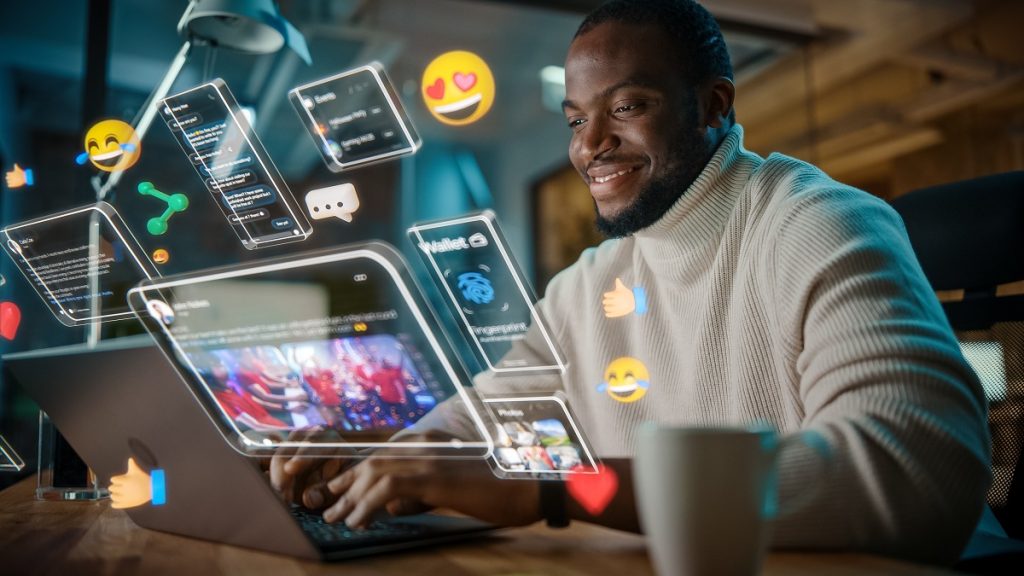
How Augmented Reality Has Made It Easy For Brands To Convey Their Message?
Last updated on April 6th, 2024 at 09:00 am
Augmented reality (AR) has changed how brands connect with their watchers, giving a compelling means to pass on data with unmatched clarity. AR has improved brand messaging across a variety of industries by harmoniously integrating digital components into the physical environment. These experiences are engrossing and captivating.
The ability of augmented reality (AR) to incorporate a visual and interactive component into brand communications is one of its primary advantages. Rather than conventional media, AR allows brands to stand apart from the messiness and hold onto the focal point of their objective market through powerful and drawing-in visuals. Brands can incorporate augmented reality (AR) to create virtual scenarios that put their products on display in real-world settings, making it easier for customers to see and understand them.
Brands can effectively communicate complex concepts thanks to the highly engaging nature of augmented reality experiences. Instead of relying upon still pictures or words on a page, brands can use AR to give involved shows, recreations, and 3D renderings. This intelligence empowers clear correspondence as well as ensures that shoppers effectively partake in the brand’s message, bringing about a more extraordinary and strong experience. This highlights the significance of the best augmented reality companies.
Brands’ storytelling abilities are also enhanced by augmented reality. AR permits brands to cause stories that foster in the actual space encompassing the client. This narrating procedure allows brands to impart their message bit by bit in a legitimate manner, shaping a more profound bond with the watchers. Whether it’s telling a product’s story from conception to use or the history of a brand, augmented reality adds more depth to the narrative. AR empowers brands to create drawing-in stories that work out in the buyer’s current circumstance, consecutively passing on the brand’s message and fashioning significant associations.
Brands can make use of augmented reality to provide users with user-friendly, in-depth product information. With the help of visual markers or object identification, brands can layer information directly on the product itself using augmented reality rather than burdening customers with lengthy blocks of text. This instant information display ensures that customers receive useful details exactly when and where they want them, facilitating a better understanding of the product’s capabilities.
AR is additionally basic in associating on the web and disconnected encounters. Brands can use augmented reality (AR) apps to enable virtual try-ons or test drives, allowing customers to digitally experience products before making a purchase. Customers can evaluate products in a real-world setting thanks to this seamless integration of the virtual and real worlds, resulting in increased brand trust and confidence.
The ability to share experiences in augmented reality broadens the reach of brand messages. Clients can just catch and post their AR corporations via online entertainment, making brand correspondence become a web sensation. This user-generated content not only expands the reach of the brand but also serves as genuine endorsements, proving that the brand’s message is clear and effective from the perspective of actual customers.
Augmented reality empowers personalization by adjusting brand interchanges to every individual’s one-of-a-kind preferences. Brands can use increased reality applications to offer altered encounters custom-fitted to a singular’s subtleties and tendencies. Be it changing item credits or sending designated advancements, expanded reality ensures the brand’s message interfaces with each client in a significant, individual way, supporting the general importance and impact of the cooperation for that individual.
In the retail business, augmented reality (AR) has altered how customers purchase things by moving the web-based shopping experience into physical stores. Using augmented reality (AR), brands can create virtual store displays that let customers look through and explore products in real-world locations with their mobile phones. This converging of actual stores and online spaces implies brands can impart their message reliably across various client collaborations, framing a brought-together and noteworthy brand insight.
All things considered, augmented reality has won over progressive brand informing, giving an adaptable and dynamic medium to convey thoughts with unrivaled clarity. AR has revolutionized brand communication with engaging visual presentations, interactive narratives, and individualized interactions. For this reason, organizations keep on looking for the best augmented reality companies. In an ever-increasingly digital and competitive environment, brands that utilize the capabilities of augmented reality will not only connect with their audiences more successfully but will also leave a lasting impression on them.
Read Dive is a leading technology blog focusing on different domains like Blockchain, AI, Chatbot, Fintech, Health Tech, Software Development and Testing. For guest blogging, please feel free to contact at readdive@gmail.com.
